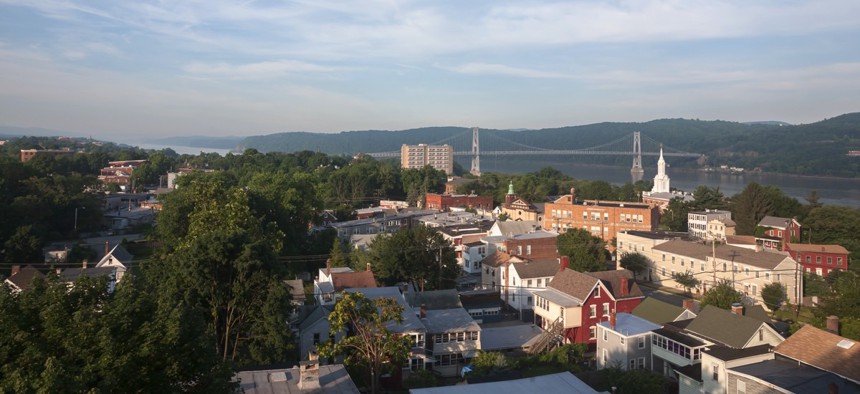Does New York State's ‘Energy Highway’ Plan Make Sense?

Poughkeepsie, New York Nancy Kennedy / Shutterstock.com

Connecting state and local government leaders
Approving the Hudson Valley transmission project could hinder the Empire State’s future in renewable energy, according to a new report.
New York state’s future should be in locally-generated, renewable energy rather than a “progressively obsolete” centralized grid, according to a new policy paper from the Washington D.C.-based National Institute for Science, Law and Public Policy.
The report is highly critical of the proposed $1.4 billion Hudson Valley “Energy Highway” transmission project, being considered by the New York Public Service Commission, which would widen the 153-mile corridor from Marcy to Pleasant Valley—constructing new power lines and 125-foot towers—in an effort to meet New York City’s peak energy needs.
Instead of preserving the current electricity system to the benefit of investor-owned utilities and at the expense of ratepayers, the paper recommends replacement with “solar combined with energy storage, microgrids, power electronic controls, and allied technologies.”
“New York State would be making an enormous and costly, wasteful, and strategic mistake to allow the Hudson Valley transmission project to proceed any further,” author Timothy Schoechle writes. “The transmission proposals should be seen for what they are—as a misguided attempt to prop up investor-owned utilities and to delay the necessary transformation of the energy economy.”
Not everyone is opposed, however.
Aside from creating 6,000 direct jobs and 17,000 jobs total, New York Transco projects a list of other Energy Highway benefits:
It is estimated that these improvements will save residents $176 million in statewide electric production costs plus $50 million to $200 million in installed capacity costs annually. In addition, the project will increase local tax revenues by approximately $25 million to $40 million annually and reduce power plant carbon dioxide and nitrous oxide emissions by more than 227,000 tons and 83 tons, respectively. This project will also help eliminate the need for a new Capacity Zone, which could cost Hudson Valley customers as much as an estimated $350 million per year. Various components of the project are anticipated to be completed between 2016 and 2019.
New York customers paid 40 percent more for electricity over the last decade while the cost of the principal fuel, natural gas, dropped 39 percent due to utilities spending about $17 billion on capital improvements. Rates are projected to increase another 63 percent in the next decade, which the paper notes is “unsustainable.”
Schoechle’s advice? The state should focus on the New York Public Service Commission’s Reforming the Energy Vision initiative to avoid Energy Highway risks of wildlife habitat fragmentation, tourism decline, property devaluation and financial waste among others.
Per the REV:
While the bulk power system has seen major regulatory changes in recent decades, the basic cost-of-service paradigm for regulating distribution utilities remains in place. Current ratemaking provides few incentives for utilities to innovate or to support third-party innovation, to address the current challenges in ways that promote a more efficient system and benefit consumers. Programs to encourage efficiency and clean energy are funded through surcharges and programs that are not directly integrated with utility business models. Although the existing paradigm served adequately for many years, it now falls short of the pace of technology development that defines many parts of our economy.
It remains to be seen whether the effort, begun a year ago by Gov. Andrew Cuomo, will achieve its goals of improving customer knowledge and management of their energy bill, market animation, systemwide efficiency, fuel and resource diversity, and system reliability and resiliency.

NEXT STORY: Charleston Church Shootings Test ‘Dean of America’s Mayors’ in His Final Year in Office





